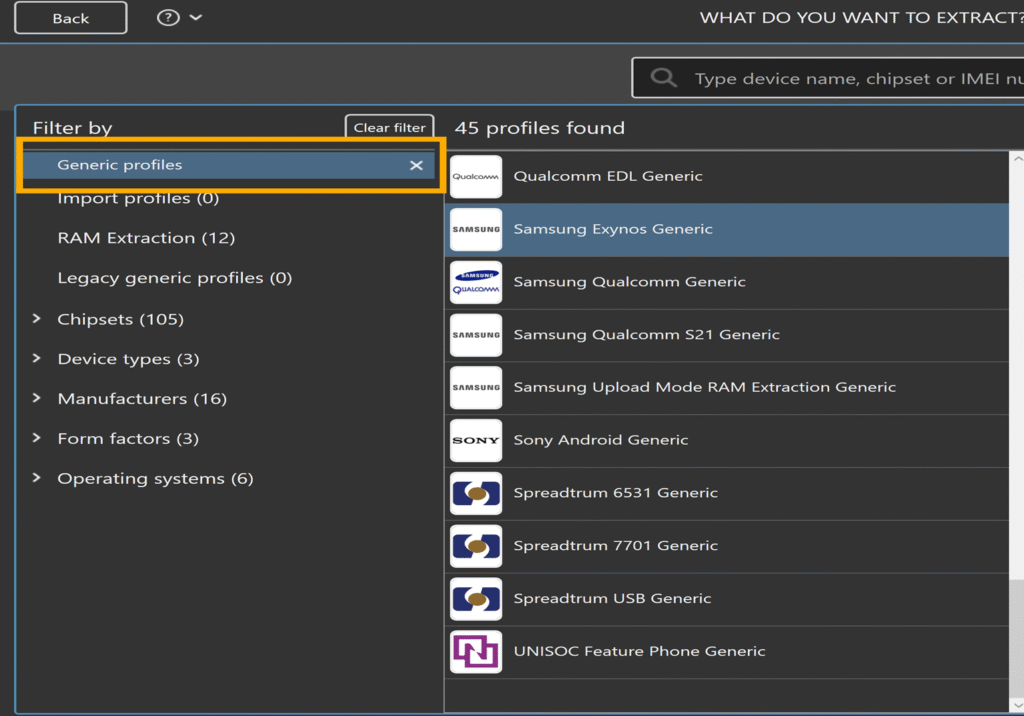Behind the Data: The Important Role of Chipsets in XRY & XRY Pro
Why chipsets matter in digital investigations
When it comes to digital investigations, the first and most crucial step is gaining access to the data.
In most cases, this process is straightforward. The device is detected automatically, the correct profile is applied, and the extraction runs smoothly.
However, not every device follows this pattern. Sometimes the chosen profile doesn’t work, or no profile exists for the device at all. In these cases, understanding the underlying technology becomes essential.
The chipset – the core hardware component that defines how a device communicates and stores data can often hold the key to a successful extraction. By identifying the chipset and selecting the corresponding generic profile in XRY or XRY Pro, examiners can broaden their access to data and improve their chances of success.
This blog explains why chipset identification matters, how it works within XRY and XRY Pro, and how this approach helps deliver faster updates, broader coverage, and better results for examiners.
When the standard profile isn’t enough
Beginning an examination and locating relevant evidence is often pivotal to the success of a digital forensics investigation. But what happens when the profile you’ve selected doesn’t work or worse, when no profile exists for the device at hand?
It’s always satisfying when a device is auto-detected, the correct profile is applied, and the extraction runs seamlessly. But when that doesn’t happen, many examiners overlook alternative methods. Relying solely on auto-detection can sometimes lead to an extraction that isn’t the most suitable for the device. For example, you might miss out on a File System (FFS) or even a Physical extraction if the automatically detected profile applies a more limited method.
That’s why it’s important for examiners to double-check the chipset and explore manual options when needed, ensuring they get the fullest possible access to the data.
Unlocking more data through chipset identification
Fortunately, MSAB customers already have a powerful option in their toolkit.
This involves identifying the chipset of a device that isn’t extracting as expected, or when you want to determine whether a more comprehensive extraction is possible.
This extra step can be the key to unlocking evidence that might otherwise be considered out of reach. Often, it’s as simple as identifying the device’s chipset and selecting the appropriate generic profile in XRY.
Preparation and knowledge are essential. Before proceeding, it’s important to confirm the model and chipset information using a trusted specification database such as GSMArena. Once the chipset is identified, XRY users can select the matching generic profile and unlock the path to a successful extraction.
How to access generic profiles in XRY Pro
To access these additional extraction methods, simply navigate through the following familiar screens:
Step 1: Options screen in XRY Pro
Step 2: Extraction and filtering options screen in XRY Pro
Once you’ve located the required Generic Profile, you can continue your extraction as normal.
Figure 1.0 – Options screen XRY Pro.
Figure 2.0 – Extraction and filtering options screen XRY Pro.
Why generic profiles matter
So why does this method matter? Isn’t the “device-specific” profile always the best option?
It’s a question we hear often at MSAB and it’s a good one.
The reality is that many different devices share the same chipset. Maintaining an individual profile for every single device would be time-consuming and could slow down the pace of updates delivered to users.
By focusing on updating the generic profile instead, MSAB can ensure that a broad range of devices are kept current through one streamlined update process and regular “bump” updates.
What this means for XRY and XRY Pro users
This approach means more frequent updates, broader coverage, and a higher chance of successful extractions across a wide variety of makes and models.
While MSAB continues to keep device-specific profiles up to date, the generic profile approach allows for faster improvements that benefit both MSAB and our customers giving examiners more opportunities to succeed with their extractions.
Conclusion
Understanding chipsets and how they relate to device profiles is an important skill for every examiner. By identifying the chipset and selecting the correct generic profile in XRY or XRY Pro, users can gain access to a wider range of devices and extraction types, increasing both efficiency and success rates. More frequent updates, broader compatibility, and improved performance all stem from this simple but powerful method.
In the end, it’s about giving examiners every possible opportunity to access the data that matters most.
Author
Bethany Morgan
Product Specialist, MSAB
With a decade of experience in law enforcement six of those dedicated to Digital Forensics and Incident Response (DFIR). Bethany is a skilled and passionate specialist in the field. Since transitioning from the Police Force to MSAB, she has been at the forefront of helping customers navigate DFIR challenges while continuously expanding her expertise in this rapidly evolving domain.
Her hands-on experience spans a wide range of forensic investigations, from evidence analysis to training new staff and CID officers, as well as producing critical forensic reports for court proceedings. Bethany’s enthusiasm for knowledge-sharing and professional growth drives her to stay ahead in this ever-changing landscape. She’s excited to keep learning, innovating, and contributing to the future of DFIR.





